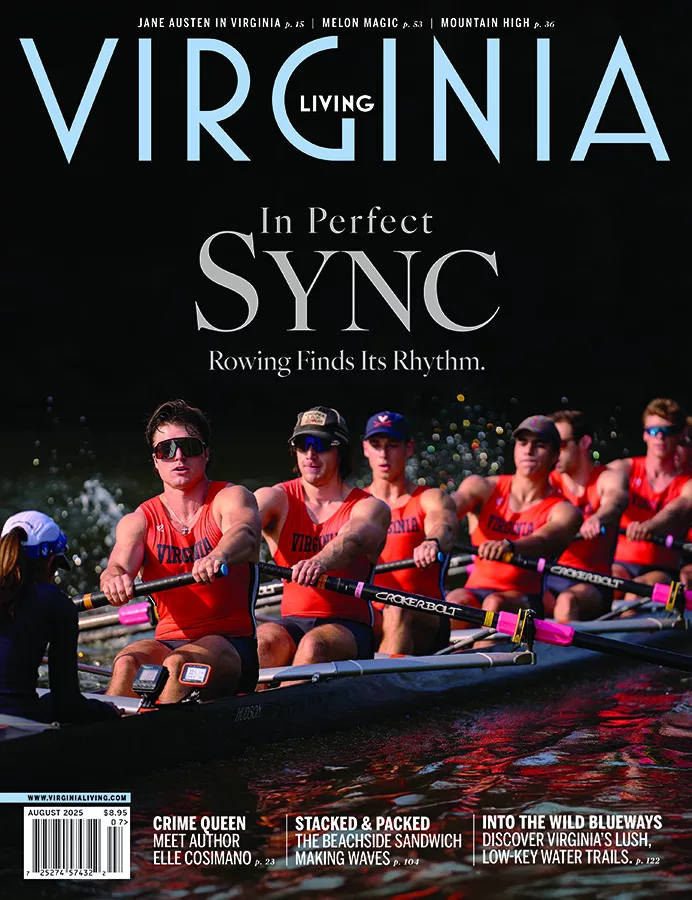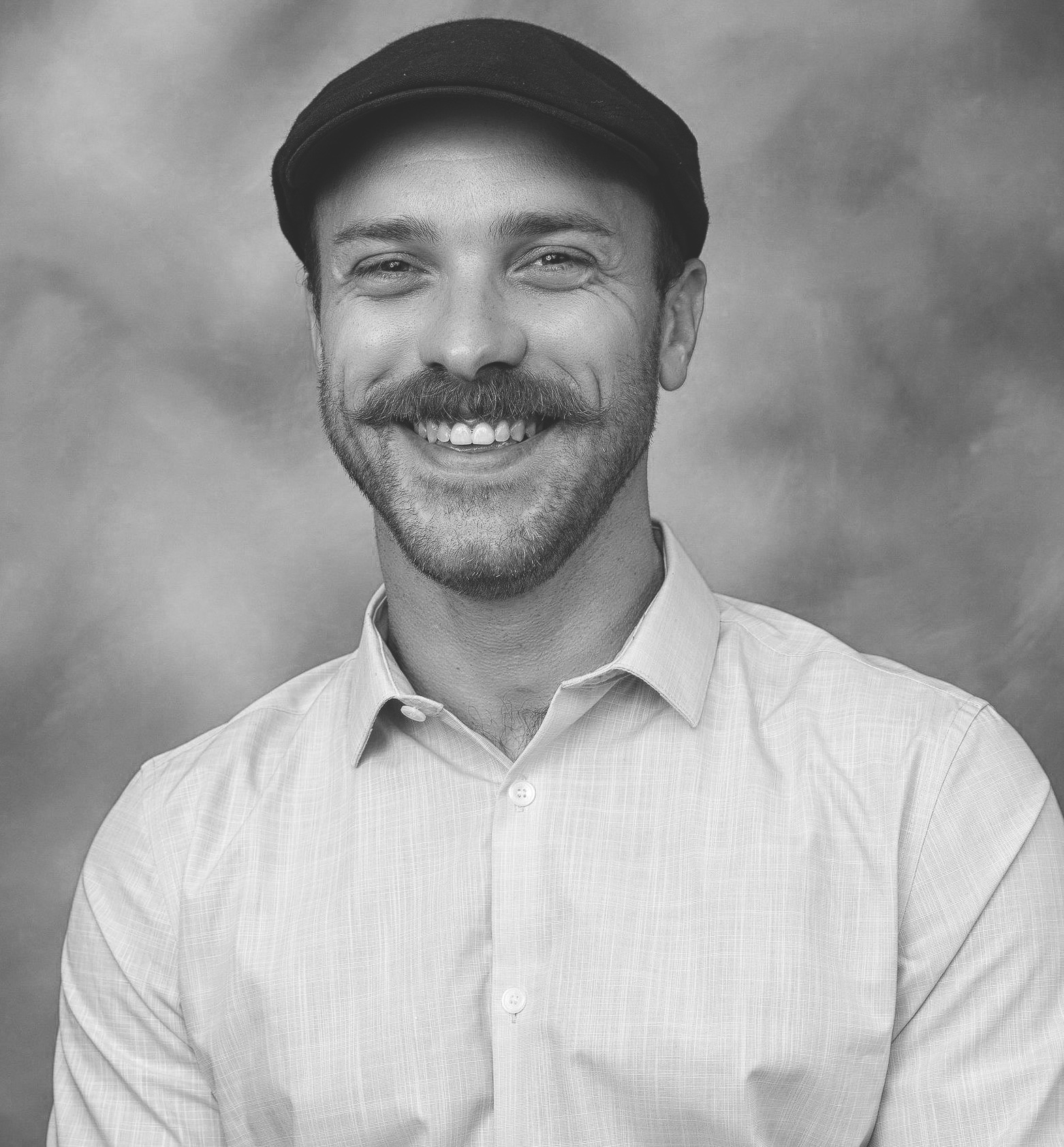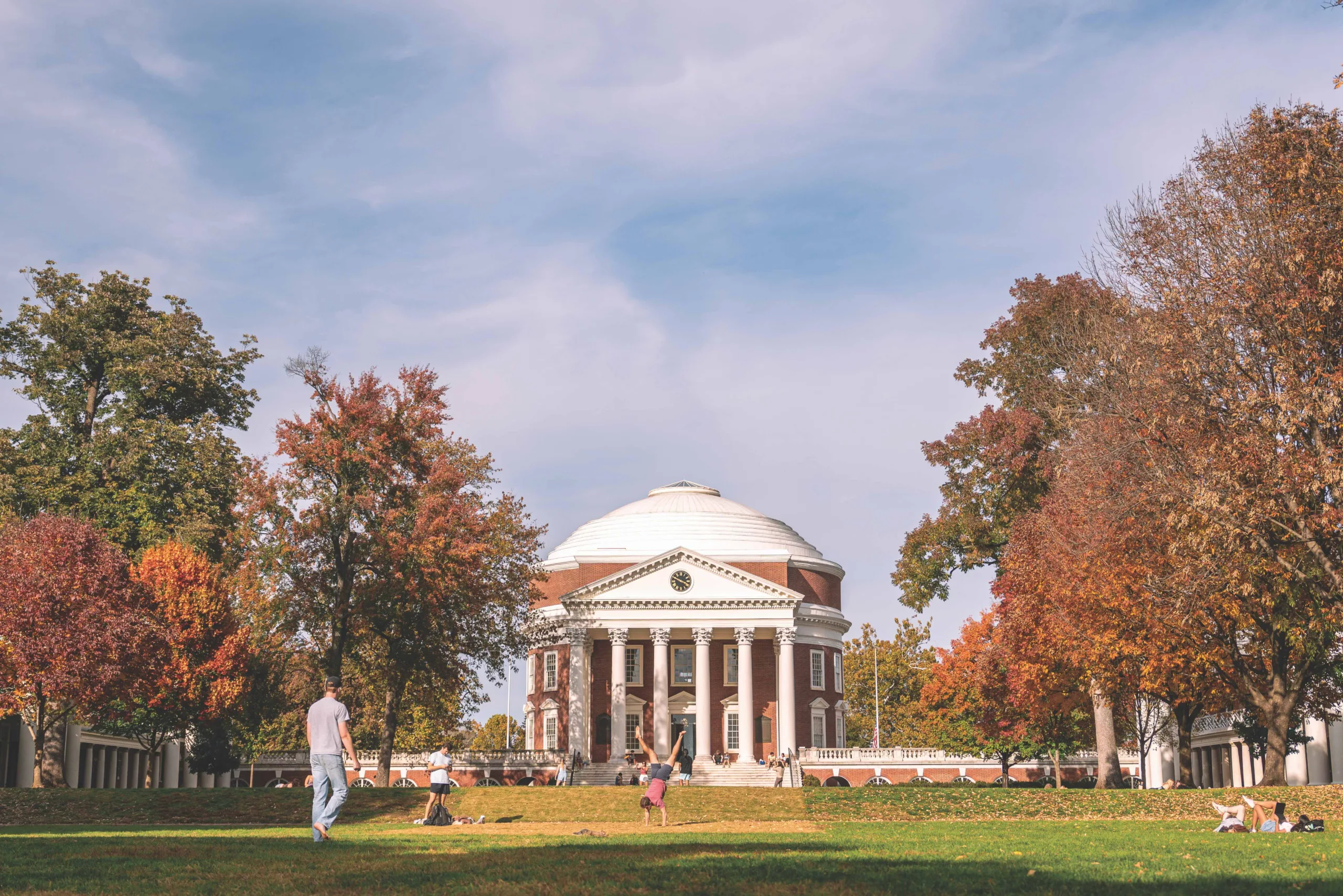Behind the goggles with air racing champion Andy Findlay.

Andy Findlay at Hampton Roads Executive Airport in Chesapeake.
Photography by Mark Edward Atkinson
Meeting 36-year-old mechanical engineer Andy Findlay at the Hampton Roads Executive Airport, he seems like an everyday kind of guy. Flanked by his wife, 20-month-old son, and Cavalier King Charles spaniel, he wears a shy smile and maintains a polite, unassuming demeanor. Yet, in a nearby airplane hangar sits a racing plane he piloted to a first-place finish at the 2018 STIHL National Championship Air Races. Held in Reno, Nevada, the event is the world’s oldest and most prestigious aerial competition. Recording an average speed of 402.7 miles per hour, Findlay set a speed record for SportClass racers.

Andy with wife Jackie and son Alex.
“I can’t take much of the credit,” he says with patent humility. Citing support from his employer and sponsor, STIHL, he points out, “In this sport, it’s more about the plane than the pilot. Fortunately, I’m surrounded by a great crew of builder-mechanics. Without them, this wouldn’t have happened.”
Known as Team One Moment, the group comprises about 10 core members. Like Findlay, they work regular jobs and volunteer on nights and weekends. Backgrounds range from engine and aircraft design to machining, custom fabrication, aerodynamics, thermodynamics, electrical engineering, and more. As Sport Class racers, the team must field an amateur-built, propeller-driven, general aviation model with an engine no larger than 1,000 cubic inches.
“We do this because we love competing and seeing how far we can push things,” says Findlay.
As the fastest competitive motorsport—and one with virtually no regulation of engine mods—he calls air racing “the last true motorsport,” likening it to NASCAR on steroids. “Where else am I gonna get the chance to work with some of the world’s most talented minds to engineer a civilian plane to break speed records?”
The answer is nowhere.

Team One Moment plane in flight.
Photo courtesy of STIHL

Team One Moment plane at rest.
Oddly enough, Findlay got interested in aerial racing through skiing. “I grew up in a tiny ski town in Idaho,” he says. It was home to two resorts, and life revolved around the slopes. “I was skiing by age 3 and quickly developed a need for speed. Soon, I got into downhill racing.”

Trophies at the hangar.
The interest introduced Findlay to competition and continued through middle school. About that time, a rival enthusiasm emerged: snowmobiles. “I fell in love with the freedom and speed, which led to the mechanical aspect,” says Findlay. He spent evenings and weekends exploring the area’s backcountry with friends. “We were hard on the machines and constantly breaking stuff. Our parents were like, ‘You broke it, you pay to fix it!’ Subsequently, we got to be pretty smart mechanics.”
The activity soon led to racing. And when the snow melted? Findlay took up motocross. But when he was 15, his father, an amateur pilot, took him to the Reno National Championship Air Races, and the experience changed Findlay’s life. “It’s such a huge and historical event, and it’s all about going fast,” he says.
The collaborative atmosphere also made an impression. Known as the “September Family,” competitors supported and encouraged one another. They seemed less focused on winning and more on pushing the envelope of aerial engineering. “When I saw that my motocross idol, Bob Hannah, was racing, that was the icing on the cake,” adds Findlay. “On the way home, I told my dad: ‘One day, I’m going to race at Reno and win a championship.’”
But like the wild-eyed dreams of most adolescents, the notion wound up on the backburner. Matriculating at the University of Idaho, Findlay found himself studying mechanical engineering. “I’d wanted to race snowmobiles professionally, but my dad convinced me to get an education,” he says. “With my background, it seemed natural to study engines to learn how to make them run better and faster.”

Team One Moment celebrating victory.
Photo courtesy of Team One Moment
While in college, Findlay blew out his knees. Racing snowmobiles and motorcycles was over. After graduating, he accepted a position in Wisconsin at Evinrude Outboard Motors. Ambitions of an Air Race championship faded.
Findlay had begun studying for his pilot’s license toward the end of college. Invigorating and immersive, flying seemed like a healthy substitute for snowmobiles. Spending 50 hours per year in the air, he sometimes thought of racing in Reno. Initially, he says, the thoughts were “one part fantasy, 10 parts nostalgia.” As he approached the Championship’s eligibility requirement of 500 flight hours, however, that changed. “I realized, if I don’t chase my dreams now, they’re gonna disappear,” he says. He scrimped and saved—including renting out his house while he roomed with a friend—to buy a used Lancair Super Legacy in 2012. Although the planes typically sell for about $250K, Findlay got his for half that. “It needed a lot of work,” he says with a laugh, “but it was perfect.” He planned to overhaul everything.

Control panel.
By then, Findlay was working at STIHL’s U.S. headquarters in Virginia Beach. Designing engine components by day, he spent his spare moments working on the plane. A few close friends helped out. Hoping to compete in the 2013 Air Races, Findlay flew to Nevada to attend a mandatory Pylon Racing Seminar. There, he learned to identify markers along the seven-mile course, techniques for passing, how to race just 200 feet above the ground, and more. Most importantly, he qualified. “That was one of the biggest moments of my life,” says Findlay. “It was hard for me to believe it was really happening.”
Racing that September, his goal was simple: Don’t get lapped. Findlay was successful. His plane—newly christened One Moment—placed fifth and averaged just over 350 mph. Meanwhile, champion Jeff LaVelle logged nearly 400 mph.
For Findlay to be truly competitive, he needed sponsorship. He approached marketing personnel at STIHL and, to his surprise, the company became a primary sponsor in 2014. As word got around, Findlay attracted aerial enthusiasts, including current Google X engineer Andre Prager and local thermodynamics innovator Mark Voss. Team One Moment was born. “We spent the next few years hot-rodding everything,” says Findlay. Using a 3D scanner,they mapped the fuselage and made aerodynamic tweaks. Electrical engineer and computer programming whiz Thomas Lindgens added state-of-the-art avionics. Custom twin turbochargers, heavy mods, and a rig that sprays coolant directly on the cylinders boosted horsepower to around 800—more than 160 percent above stock. “Our goal was to break 400 mph,” says Findlay.
Pushing his plane to the max, Findlay gained a reputation for wrecking engines. Aside from a third-place finish in 2015, Team One Moment’s Reno performances were cut short by mechanical failure. That changed on September 16, 2018. Not only did Findlay beat out 35 Sport Class pilots, but he unseated longtime reigning champion LaVelle and set a world record. “It was such a magical, life-affirming moment,” says Findlay. “As a kid, I had this crazy dream that everyone—even I—thought was unattainable. Twenty years later, it came true. Now I can tell a kid, with honesty, ‘If you work hard enough, make sacrifices, and go after it with everything you have, you can make your dreams a reality.’”
This article originally appeared in our June 2019 issue.










